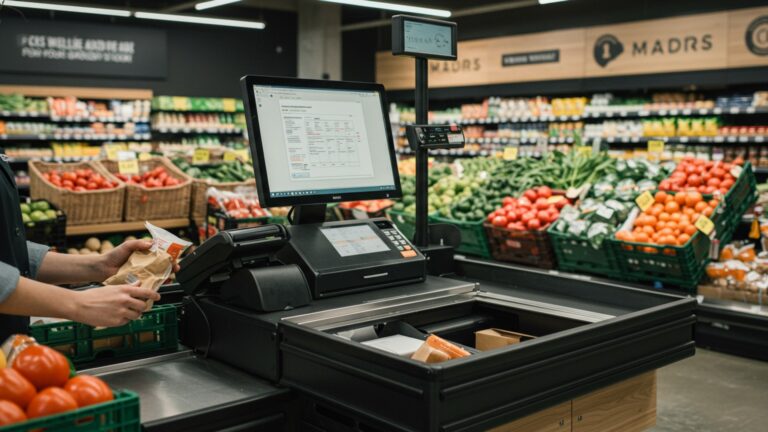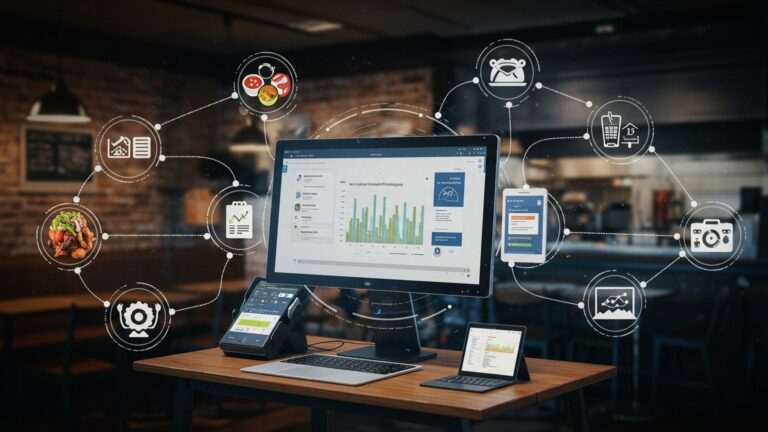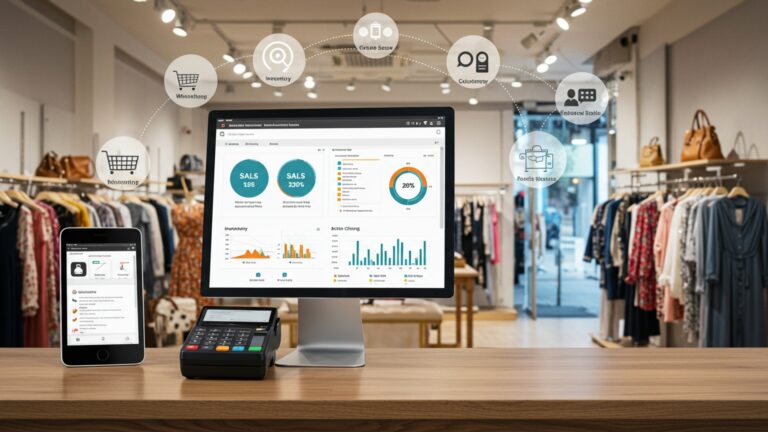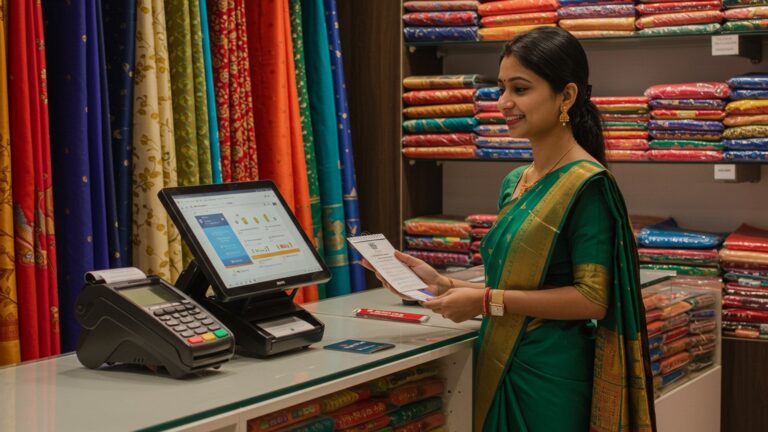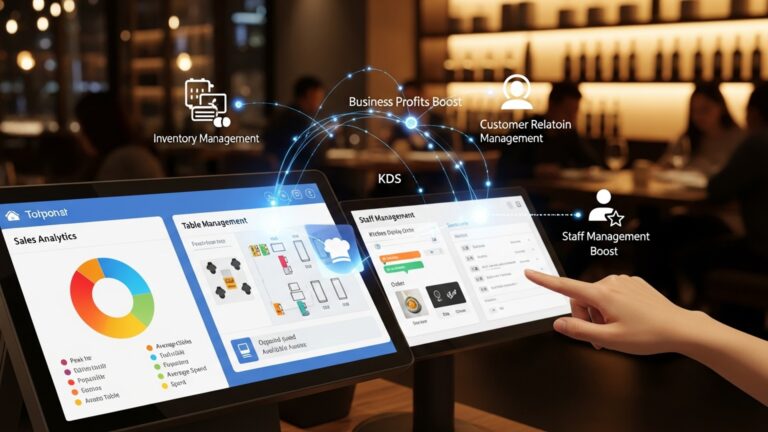Compare POS Software Price in India 5 Essential Factors to Know
Securing the right POS software for your Indian business goes far beyond a simple price comparison; it’s a strategic investment in operational efficiency and growth. From hypermarkets to boutique cafes, understanding the true pos software price in India involves dissecting more than just subscription fees. The market now demands solutions compatible with UPI payments, GST invoicing. seamless integration with existing inventory or loyalty systems, dramatically influencing long-term value. Overlooking factors like essential hardware compatibility, scalable cloud infrastructure costs, or the often-hidden charges for advanced features can transform an initial bargain into an expensive liability. Smart businesses prioritize a holistic evaluation to avoid future operational bottlenecks and unexpected expenditures.
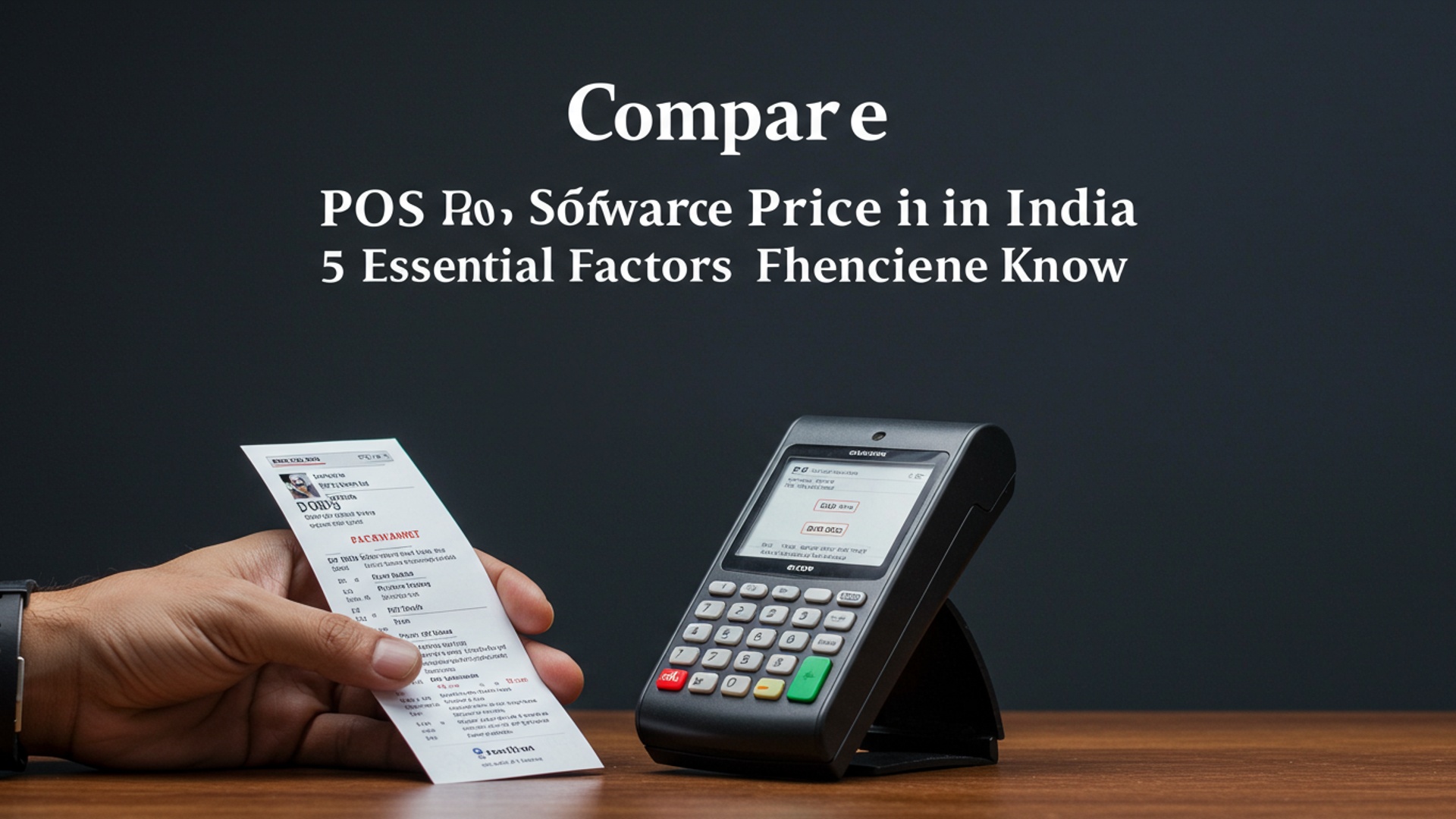
Understanding the Landscape of POS Software in India
Before diving into the intricacies of pricing, it’s crucial to interpret what POS (Point of Sale) software truly entails. Far beyond a simple cash register, modern POS software is the central nervous system of a retail or hospitality business. It manages sales transactions, tracks inventory, processes payments. often integrates with customer relationship management (CRM) systems, accounting software. e-commerce platforms. For businesses in India, choosing the right POS solution can significantly impact efficiency, customer experience. profitability. The ‘pos software price in india’ is not a one-size-fits-all figure; it’s a dynamic cost influenced by several critical factors, which we will explore in detail. Understanding these elements will empower you to make an informed decision that aligns with your business needs and budget.
Factor 1: Deployment Model – Cloud-Based vs. On-Premise Solutions
One of the most significant determinants of ‘pos software price in India‘ is the deployment model you choose. This decision impacts not only the initial cost but also long-term operational expenses, accessibility. scalability.
-
- Cloud-Based (SaaS – Software as a Service) POS
This model hosts the software on the vendor’s servers and delivers it over the internet. Businesses access the POS system via a web browser or a dedicated app.
-
-
- Pros
-
Lower upfront costs (typically a monthly or annual subscription), automatic updates and maintenance handled by the vendor, accessibility from anywhere with an internet connection, greater scalability. often robust data backup.
-
-
- Cons
-
Reliance on internet connectivity, potential data security concerns (though reputable vendors offer strong security). less customization flexibility compared to on-premise solutions.
-
-
- Cost Impact
-
The ‘pos software price in india’ for cloud solutions is generally structured as a recurring subscription fee per terminal or user. For instance, a small café might pay ₹1,000 – ₹3,000 per month for a basic cloud POS, while a larger retail chain with multiple terminals could pay ₹5,000 – ₹15,000+ per month, depending on features and user count.
-
- On-Premise (Self-Hosted) POS
With this model, the software is installed and runs directly on your business’s computers and servers.
-
-
- Pros
-
One-time upfront purchase (though maintenance fees may apply), full control over data security, no reliance on internet for core operations. extensive customization possibilities.
-
-
- Cons
-
High initial investment for software licenses and hardware, responsibility for all maintenance, updates. backups, limited accessibility (typically only within the business premises). potential IT staffing costs.
-
-
- Cost Impact
-
The initial ‘pos software price in india’ for an on-premise solution can range from ₹25,000 to ₹1,50,000 or more for a perpetual license, excluding hardware and installation. Ongoing costs include potential annual maintenance contracts (AMC), which can be 15-25% of the license cost. internal IT management.
Consider the table below for a quick comparison:
| Feature | Cloud-Based POS | On-Premise POS |
|---|---|---|
| Initial Investment | Low (Subscription) | High (License + Hardware) |
| Ongoing Costs | Predictable Monthly/Annual Fees | Maintenance, Updates, IT Staffing |
| Maintenance & Updates | Vendor Managed | Business Managed |
| Accessibility | Anywhere, Anytime (Internet Required) | Typically On-Site Only |
| Scalability | Easy to Scale Up/Down | Requires Hardware/License Upgrades |
| Data Control | Vendor Managed (with security protocols) | Full Business Control |
Factor 2: Feature Set and Included Modules
The functionality offered by POS software directly influences its price. A basic POS system might handle sales and inventory, while an advanced one could offer a comprehensive suite of tools. When evaluating the ‘pos software price in india’, scrutinize what features are standard, what are add-ons. which ones are truly essential for your business.
-
- Basic Features
Most entry-level POS systems include core functionalities like:
-
-
- Sales processing (cash, card, UPI)
- Basic inventory management (stock tracking, reorder alerts)
- Customer management (basic profiles)
- Reporting (daily sales, end-of-day reports)
- Employee management (time clock, basic permissions)
- Advanced Modules & Integrations
-
Higher-priced POS solutions often come with, or offer as add-ons, sophisticated modules such as:
-
-
- Advanced Inventory Management
-
Multi-location inventory, vendor management, purchase order creation, batch tracking, product matrix (sizes, colors).
-
-
- Customer Relationship Management (CRM)
-
Loyalty programs, customer segmentation, targeted marketing campaigns, gift card management.
-
-
- Accounting Integration
-
Seamless sync with popular accounting software like Tally, Zoho Books, or QuickBooks.
-
-
- E-commerce Integration
-
Syncing online and offline sales, inventory. customer data for businesses operating both physical and online stores.
-
-
- Analytics & Reporting
-
In-depth sales analytics, trend analysis, predictive forecasting, employee performance metrics.
-
-
- Restaurant-Specific Features
-
Table management, kitchen display systems (KDS), online ordering integration, menu management, order customization.
-
-
- Multi-Store Management
-
Centralized control over inventory, pricing, promotions. reporting across multiple outlets.
For example, a small boutique that only needs basic sales and inventory tracking might find a cloud POS for ₹1,500/month sufficient. But, a multi-chain restaurant aiming for seamless online ordering, kitchen management. loyalty programs would require a much more robust system, potentially costing upwards of ₹8,000 – ₹20,000+ per month or a significant upfront license fee. The ‘pos software price in india’ scales directly with the depth and breadth of features. Always conduct a thorough needs assessment to avoid overpaying for features you won’t use or underbuying and needing to upgrade quickly.
Factor 3: Number of Users, Terminals. Locations
Scalability is a major factor influencing the ‘pos software price in india’. Most vendors structure their pricing based on how many points of sale you operate, how many employees need access. whether your business has multiple physical locations.
-
- Per-Terminal Pricing
Many cloud-based POS providers charge per terminal or register. If you have two billing counters, you’ll pay for two terminals. This is common for retail and hospitality where each counter is a separate operational unit.
-
- Per-User Pricing
Some systems, especially those with extensive back-office functionalities (like inventory management or analytics), might charge based on the number of users who need administrative or specific access roles, regardless of the number of terminals.
-
- Multi-Location Licensing
For businesses with more than one store, the ‘pos software price in india’ typically increases. Vendors might offer discounted rates for additional locations. it’s rarely a simple multiplication of a single-store price. Multi-location licenses often include features for centralized management, which adds value and cost.
- Real-world Application
Consider “Café Aroma,” a single-outlet coffee shop with one billing counter and two staff members needing POS access. They might opt for a basic plan covering one terminal and unlimited users, costing around ₹1,800/month. Now, imagine “Aroma Chain,” with five outlets across the city, each having two billing counters. a central management team of three needing full access. Their ‘pos software price in india’ would be significantly higher, likely involving a multi-location plan that covers 10 terminals and several administrative users, potentially costing ₹15,000 – ₹30,000+ per month, depending on the vendor and feature set. The key is to project your growth and choose a system that can scale with you without exorbitant cost jumps.
Factor 4: Hardware Compatibility and Requirements
While we’re discussing ‘pos software price in india’, it’s crucial not to overlook the associated hardware costs. The software needs hardware to run on. this can be a significant upfront investment, especially for on-premise solutions.
-
- Dedicated POS Hardware
Many traditional POS systems require specific, robust hardware components. These typically include:
-
-
- POS Terminal (touchscreen monitor or all-in-one unit)
- Barcode Scanner
- Receipt Printer (thermal or impact)
- Cash Drawer
- Customer Display Screen
- Card Reader / UPI QR Code Scanner
-
The cost for a complete set of dedicated POS hardware can range from ₹30,000 to ₹1,00,000 per workstation. While durable, these are specialized and can be expensive to replace or upgrade.
-
- Off-the-Shelf Hardware (for Cloud POS)
A major advantage of many modern cloud-based POS systems is their compatibility with standard off-the-shelf hardware. This means you can often use:
-
-
- An iPad or Android tablet
- A laptop or desktop computer
- Generic USB barcode scanners and receipt printers
-
This significantly reduces the initial hardware investment. For instance, you might use an existing tablet and purchase a compatible receipt printer and barcode scanner for ₹10,000 – ₹25,000. This flexibility directly impacts the total ‘pos software price in india’ you’ll incur.
-
- Bundled Solutions
Some POS vendors offer hardware-software bundles. While these can seem convenient, always compare the cost of buying components separately versus the bundled price. Sometimes, the ‘pos software price in india’ might appear lower. the bundled hardware inflates the total.
- Actionable Takeaway
Before committing to any POS software, interpret its hardware requirements. Ask vendors for a list of compatible devices and their estimated costs. If you already own tablets or computers, prioritize software that can run on them to minimize initial expenditure. “Many of our clients in the SMB sector initially overlook hardware costs, only to find them adding a substantial chunk to their overall POS budget,” notes a leading retail tech consultant. “Choosing a cloud POS that works with standard tablets can be a game-changer for reducing initial investment.”
Factor 5: Support, Maintenance. Hidden Costs
The sticker price of POS software rarely tells the whole story. Understanding the ongoing costs for support, maintenance. potential hidden fees is paramount when comparing the ‘pos software price in india’.
-
- Customer Support
- Included Support
- Customer Support
Many cloud POS subscriptions include standard customer support (email, chat, phone during business hours). The quality and responsiveness can vary greatly.
-
-
- Premium Support
-
Some vendors offer tiered support plans, with premium options providing 24/7 access, dedicated account managers, or faster response times, often at an additional cost.
-
-
- On-Premise Support
-
For on-premise systems, support is typically part of an Annual Maintenance Contract (AMC), which is an additional recurring fee. Without an AMC, you might pay per incident, which can be expensive.
-
- Software Updates and Upgrades
- Cloud POS
- Software Updates and Upgrades
Updates are usually automatic and included in your subscription, ensuring you always have the latest features and security patches.
-
-
- On-Premise POS
-
Major version upgrades often require purchasing a new license or paying a substantial upgrade fee. Security patches and minor updates might be covered under an AMC.
- Setup and Installation Fees
- While some cloud POS systems are designed for DIY setup, others (especially more complex solutions or on-premise systems) might charge for professional installation, data migration from old systems. initial configuration. These can range from a few thousand rupees to tens of thousands.
- Training
- Basic training might be included. extensive, on-site training for multiple employees or advanced features could incur extra charges. Online tutorials and documentation are common. personalized training comes at a premium.
- Payment Processing Fees
- While not strictly part of the ‘pos software price in india’, payment processing is intrinsically linked. Some POS systems have preferred or integrated payment processors. their transaction fees can vary. Always clarify if the POS vendor benefits from your payment processing or if you have the flexibility to choose your processor.
- Customization Costs
- If your business requires highly specific customizations not available out-of-the-box, expect to pay development fees. This is more common with on-premise solutions or enterprise-level cloud platforms.
When comparing the ‘pos software price in india’, always ask for a detailed breakdown of all potential costs, both initial and recurring. A seemingly cheaper upfront option might accumulate significant costs over time through hidden fees or expensive support plans. A transparent vendor will provide a clear picture of the total cost of ownership (TCO).
Conclusion
Navigating POS software pricing in India can feel like a labyrinth. remember, the sticker price is merely one piece of the puzzle. True value emerges when the software aligns perfectly with your business’s unique operational demands, from managing diverse inventory in a bustling retail store to streamlined billing with GST compliance. My personal tip is to always look beyond the initial cost; a slightly higher investment upfront can prevent significant operational bottlenecks and hidden expenses down the line, especially as your business scales in India’s dynamic market. Consider how crucial features like robust inventory management or seamless online payment integration impact your long-term efficiency and customer satisfaction. Don’t be swayed by the cheapest option without a thorough demo and understanding of their support structure. As the digital economy rapidly evolves, ensuring your POS provider offers responsive local support and regular updates is paramount. Take the actionable step of listing your non-negotiable requirements, then compare solutions based on their total cost of ownership, not just the monthly fee. Embrace this decision as an investment in your business’s future, empowering you to thrive and expand with confidence.
More Articles
7 Essential Tips for Finding Affordable POS Software Price in India
Learn How to Select the Best POS Software in India for Success
How to Choose the Right POS Software for Your Retail Business Guide
Unlock Growth with 7 Essential Free POS Software Options for Small Businesses
7 Essential Features Your POS Billing Software Needs for GST Compliance
FAQs
What are the absolute must-know factors when comparing POS software prices in India?
When you’re looking at POS software prices in India, don’t just focus on the upfront cost. You really need to consider five essential factors: the specific features your business needs, the pricing model (like subscription vs. one-time purchase), hardware compatibility and costs, the kind of support and training offered. how scalable or customizable the software is for your future growth.
Do I really need all the fancy features, or can I get by with a basic POS system for my small business?
It totally depends on your business’s unique needs! A small cafe might only require basic sales and inventory management, while a multi-store retail chain would benefit from advanced features like CRM, loyalty programs, detailed reporting. multi-location syncing. Don’t pay for features you won’t use. also ensure the basic system isn’t too limiting for your current or future operations.
What’s the difference between subscription-based and one-time purchase pricing models for POS software?
Most modern POS software in India operates on a subscription model, where you pay a monthly or annual fee. This usually includes regular updates, maintenance. basic support. One-time purchases are less common now but involve a higher upfront cost, with potential separate charges for updates, advanced support, or future upgrades. Consider your budget and long-term financial planning.
Does the quoted POS software price usually include the hardware, like a cash register or barcode scanner?
Generally, the price for POS software is separate from the hardware. While some vendors might offer bundled packages, you’ll often need to purchase hardware components like receipt printers, barcode scanners, cash drawers. card readers separately. Always clarify what’s included in any pricing quote to avoid surprises.
What kind of customer support should I expect. is it always included in the price?
Good customer support is super essential, especially in India where businesses often operate long hours. Most subscription plans include standard support via email, phone, or chat. But, some vendors offer premium support tiers with faster response times, dedicated account managers, or on-site assistance for an additional fee. Always check the specifics of the support package.
My business might expand; can POS software adapt to growth, or will I have to switch systems later?
Scalability is a key factor! Look for POS systems that offer different plans or modules you can easily add as your business grows. You’ll want software that can handle more users, increased inventory, multiple store locations, or even integrate with e-commerce platforms without requiring a complete system overhaul down the line.
Are there any hidden costs I should look out for when comparing POS software prices in India?
Yes, absolutely! Beyond the core software and hardware, watch out for potential hidden costs like implementation fees, data migration charges, annual maintenance contracts (if not on a subscription), payment gateway fees, specific integration costs for third-party apps, or additional charges for advanced reporting and extra user licenses. Always ask for a comprehensive breakdown of all potential expenses.

